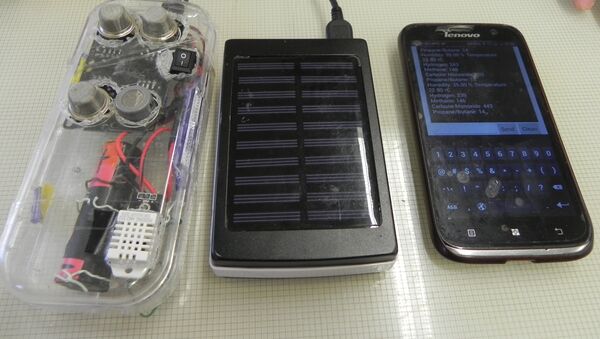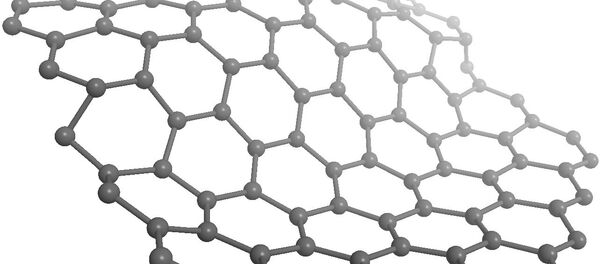MOSCOW (Sputnik) — Dmitry Sevastyanov, a third-year MEPhI student, has invented a smartphone-based hydrocarbon gas detector, says the MEPhI press release.
The device can be used by anyone who has sensed some gas contamination in premises prone to gas accumulation. The invention is primarily intended for the personnel carrying out different works in basements of buildings and structures, and in utility systems. Poor ventilation in such places may potentially lead to hazardous accumulation of hydrocarbon gases.
The device helps to detect the presence and measure the concentration of such hazardous and highly flammable gases as methane, propane, carbon monoxide and hydrogen. The results are displayed on the smartphone screen. Such a device will cost considerably less than the portable gas detectors used currently (Signal, ShI-10, ShI-11).
READ MORE: Russian Scientists Develop Software for Next-Gen Nuclear Reactor Technology
At present, factories use expensive gas detectors to measure the concentration levels of hazardous gases and vapors in the air. A cheaper alternative is single-gas detectors. However, the latter can only measure the concentration of one or two gases at a time.
“The device invented by Sevastyanov measures the concentration of several gases (propane, methane, hydrogen and carbon monoxide), as well as a range of physical parameters, such as temperature or humidity,” said Natalya Yermolayeva, the student’s research supervisor and a MEPhI associate professor.
According to the inventor, the pairing device is based on a RobotDyn UNO microcontroller module, which is a cost-effective alternative to Arduino UNO, and is fully compatible with Android devices.

“The device consists of three hardware components: a smartphone, a pairing device (Arduino module) connected to the sensors, and a communication line between the Arduino module and a smartphone,” Dmitry Sevastyanov said.
READ MORE: Russian Scientists Fight Cancer Using Extract From Mysterious Sea Creature
The device is easy to operate. At first, the module switches on and connects to the smartphone. A dialog box appears on the smartphone screen, and the user selects the variable measured, e.g. methane concentration.
This information is transmitted through the communication line to the Arduino module. The module activates the appropriate sensor (in our case it is the gas concentration sensor) and processes the data received from this sensor. The results are then transmitted to the smartphone and displayed on the screen.

The set of measurable gases depends on the number of sensors connected to the module. Simultaneous operation of five sensors is supported, and each of the sensors can be substituted thanks to the modularity principle of the device. To install a new sensor, the user only needs to change the code and reprogram the module.


